Papers by Sangram Ganguly
This study explores the capability of satellite remote sensing to detect relatively rapid changes... more This study explores the capability of satellite remote sensing to detect relatively rapid changes of vegetation cover in northern Fennoscandian regions in response to disturbance more generally, and insect defoliation damage in particular. The data used is a long term time series of leaf area index (LAI) at 8 Km resolution derived from the Advanced Very High Resolution Radiometer (AVHRR) between 1982 and 2006, developed to be structurally consistent with the Moderate Resolution Imaging Spectrometer (MODIS) record. The study explores the potential of frequentist traditional statistics to detect disturbances at this coarse spatial resolution over the 25 years time series, and outlines the possibilities that Bayesian methods offer to improve the detection by including prior information on the profile of such disturbance events.

Phenological information can be provided globally using remote sensing based time-series vegetati... more Phenological information can be provided globally using remote sensing based time-series vegetation indices. Basic differences in the data and methods used can yield different results. This study analysed such differences in the phenological information, mainly onset of greenness (OG), estimated using the Enhanced Vegetation Index (EVI) from Moderate Resolution Imaging Spectroradiometer (MODIS) data and the Terrestrial Chlorophyll Index (MTCI) from Medium Resolution Imaging Spectrometer (MERIS) data. The two datasets were processed independently using different techniques to provide weekly estimates. Differences in the OG results were analysed for two years (2003 & 2006) and at four levels: a) full study area, b) within land cover classes, c) within core zones of each class and d) at the edge zones of each class. It was found that the trend of OG estimated from MODIS and MERIS were spatially similar, although not the same. From 15 Biome classes found in the study area the classes with the greatest differences were evergreen needle leaf, mixed forest and cropland. The differences were mainly due to the characteristic nature of the indices and also, to some extent, due to false internal flags in the algorithms.
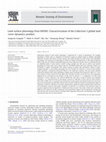
Remote Sensing of Environment, 2010
Information related to land surface phenology is important for a variety of applications. For exa... more Information related to land surface phenology is important for a variety of applications. For example, phenology is widely used as a diagnostic of ecosystem response to global change. In addition, phenology influences seasonal scale fluxes of water, energy, and carbon between the land surface and atmosphere. Increasingly, the importance of phenology for studies of habitat and biodiversity is also being recognized. While many data sets related to plant phenology have been collected at specific sites or in networks focused on individual plants or plant species, remote sensing provides the only way to observe and monitor phenology over large scales and at regular intervals. The MODIS Global Land Cover Dynamics Product was developed to support investigations that require regional to global scale information related to spatiotemporal dynamics in land surface phenology. Here we describe the Collection 5 version of this product, which represents a substantial refinement relative to the Collection 4 product. This new version provides information related to land surface phenology at higher spatial resolution than Collection 4 (500-m vs. 1-km), and is based on 8-day instead of 16-day input data. The paper presents a brief overview of the algorithm, followed by an assessment of the product. To this end, we present (1) a comparison of results from Collection 5 versus Collection 4 for selected MODIS tiles that span a range of climate and ecological conditions, (2) a characterization of interannual variation in Collections 4 and 5 data for North America from 2001 to 2006, and (3) a comparison of Collection 5 results against ground observations for two forest sites in the northeastern United States. Results show that the Collection 5 product is qualitatively similar to Collection 4. However, Collection 5 has fewer missing values outside of regions with persistent cloud cover and atmospheric aerosols. Interannual variability in Collection 5 is consistent with expected ranges of variance suggesting that the algorithm is reliable and robust, except in the tropics where some systematic differences are observed. Finally, comparisons with ground data suggest that the algorithm is performing well, but that end of season metrics associated with vegetation senescence and dormancy have higher uncertainties than start of season metrics.
Geophysical Research Letters, 2007

Monitoring of vegetation structure and functioning is critical to modeling terrestrial material a... more Monitoring of vegetation structure and functioning is critical to modeling terrestrial material and energy cycles, ecosystem productivity and land use/land cover dynamics within the general context of climate change. Satellite remote sensing is ideally suited for vegetation monitoring as it provides multi-decadal observations at a range of spatio-temporal scales. Consequently, there is now a pressing need to develop methodologies for generating consistent Earth System Data Records (ESDRs) from multiple satellite sensors. Leaf Area Index (LAI) and Fraction of Photosynthetically Active Radiation (FPAR) are sensor-independent measurable characteristics of vegetation. Multi-decadal global data sets of these variables generated with a physically based algorithm and of known accuracy are currently not available, although several short term research quality data sets exist. Therefore, the objective of this research was to formulate and demonstrate the performance of a synergistic approach for the retrieval of LAI/FPAR fields from measurements by multiple sensors. An algorithm to generate consistent LAI values from the Moderate Resolution Imaging Spectroradiometer (MODIS) and the Advanced Very High Resolution Radiometers (AVHRR) was developed. The approach is based on the radiative transfer theory of spectral invariants. The scale-dependent single scattering albedo and input data uncertainties govern the constrains to consistent retrievals of LAI from data of multiple sensors. A global monthly AVHRR LAI data set was generated from the corresponding Normalized Difference Vegetation Index (NDVI) fields for the period July 1981 to December 2006 using this algorithm. An evaluation of generated data set through direct comparison to ground data and inter-comparison with other LAI and surrogate data indicates good agreement both in terms of absolute values and temporal variations. The utility of the derived data set is demonstrated with a case study on characterizing climate and land use impacts on vegetation in the semi-arid tropics. It was found that large portions of the densely populated, tropical dry lands of the eastern hemisphere have experienced marked positive trends in vegetation greenness over the period 1981-2006. The results presented in this dissertation imbue confidence in the utility of this seamless, consistent satellite data product for large scale terrestrial-biosphere modeling and monitoring of global vegetation dynamics.
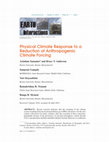
Earth Interactions, 2010
Recent research indicates that the warming of the climate system resulting from increased greenho... more Recent research indicates that the warming of the climate system resulting from increased greenhouse gas (GHG) emissions over the next century will persist for many centuries after the cessation of these emissions, principally because of the persistence of elevated atmospheric carbon dioxide (CO 2 ) concentrations and their attendant radiative forcing. However, it is unknown whether the responses of other components of the climate system-including those related to Greenland and Antarctic ice cover, the Atlantic thermohaline circulation, the West African monsoon, and ecosystem and human welfarewould be reversed even if atmospheric CO 2 concentrations were to recover to 1990 levels. Here, using a simple set of experiments employing a currentgeneration numerical climate model, the authors examine the response of the physical climate system to decreasing CO 2 concentrations following an initial increase. Results indicate that many characteristics of the climate system, including global temperatures, precipitation, soil moisture, and sea ice, recover as CO 2 concentrations decrease. However, other components of the Earth system may still exhibit nonlinear hysteresis. In these experiments, for instance, increases in stratospheric water vapor, which initially result from increased CO 2 concentrations, remain present even as CO 2 concentrations recover. These results suggest that identification of additional threshold behaviors in response to human-induced global climate change should focus on subcomponents of the full Earth system, including cryosphere, biosphere, and chemistry.

Environmental Research Letters, 2012
This work investigates variations in satellite-measured greenness of Amazon forests using ten yea... more This work investigates variations in satellite-measured greenness of Amazon forests using ten years of NASA Moderate Resolution Imaging Spectroradiometer (MODIS) enhanced vegetation index (EVI) data. Corruption of optical remote sensing data with clouds and aerosols is prevalent in this region; filtering corrupted data causes spatial sampling constraints, as well as reducing the record length, which introduces large biases in estimates of greenness anomalies. The EVI data, analyzed in multiple ways and taking into account EVI accuracy, consistently show a pattern of negligible changes in the greenness levels of forests both in the area affected by drought in 2005 and outside it. Small random patches of anomalous greening and browning-especially prominent in 2009-appear in all ten years, irrespective of contemporaneous variations in precipitation, but with no persistence over time. The fact that over 90% of the EVI anomalies are insignificantly small-within the envelope of error (95% confidence interval) in EVI-warrants cautious interpretation of these results: there were no changes in the greenness of these forests, or if there were changes, the EVI data failed to capture these either because the constituent reflectances were saturated or the moderate resolution precluded viewing small-scale variations. This suggests a need for more accurate and spatially resolved synoptic views from satellite data and corroborating comprehensive ground sampling to understand the greenness dynamics of these forests.
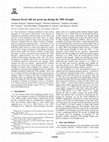
Geophysical Research Letters, 2010
1] The sensitivity of Amazon rainforests to dry-season droughts is still poorly understood, with ... more 1] The sensitivity of Amazon rainforests to dry-season droughts is still poorly understood, with reports of enhanced tree mortality and forest fires on one hand, and excessive forest greening on the other. Here, we report that the previous results of large-scale greening of the Amazon, obtained from an earlier version of satellitederived vegetation greenness data -Collection 4 (C4) Enhanced Vegetation Index (EVI), are irreproducible, with both this earlier version as well as the improved, current version (C5), owing to inclusion of atmosphere-corrupted data in those results. We find no evidence of large-scale greening of intact Amazon forests during the 2005 droughtapproximately 11%-12% of these droughtstricken forests display greening, while, 28%-29% show browning or no-change, and for the rest, the data are not of sufficient quality to characterize any changes. These changes are also not uniqueapproximately similar changes are observed in non-drought years as well. Changes in surface solar irradiance are contrary to the speculation in the previously published report of enhanced sunlight availability during the 2005 drought. There was no co-relation between drought severity and greenness changes, which is contrary to the idea of drought-induced greening. Thus, we conclude that Amazon forests did not green-up during the 2005 drought. Citation: Samanta, A.,
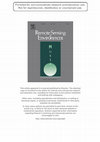
Remote Sensing of Environment, 2008
The generation of multi-decade long Earth System Data Records (ESDRs) of Leaf Area Index (LAI) an... more The generation of multi-decade long Earth System Data Records (ESDRs) of Leaf Area Index (LAI) and Fraction of Photosynthetically Active Radiation absorbed by vegetation (FPAR) from remote sensing measurements of multiple sensors is key to monitoring long-term changes in vegetation due to natural and anthropogenic influences. Challenges in developing such ESDRs include problems in remote sensing science (modeling of variability in global vegetation, scaling, atmospheric correction) and sensor hardware (differences in spatial resolution, spectral bands, calibration, and information content). In this paper, we develop a physically based approach for deriving LAI and FPAR products from the Advanced Very High Resolution Radiometer (AVHRR) data that are of comparable quality to the Moderate resolution Imaging Spectroradiometer (MODIS) LAI and FPAR products, thus realizing the objective of producing a long (multi-decadal) time series of these products. The approach is based on the radiative transfer theory of canopy spectral invariants which facilitates parameterization of the canopy spectral bidirectional reflectance factor (BRF). The methodology permits decoupling of the structural and radiometric components and obeys the energy conservation law. The approach is applicable to any optical sensor, however, it requires selection of sensor-specific values of configurable parameters, namely, the single scattering albedo and data uncertainty. According to the theory of spectral invariants, the single scattering albedo is a function of the spatial scale, and thus, accounts for the variation in BRF with sensor spatial resolution. Likewise, the single scattering albedo accounts for the variation in spectral BRF with sensor bandwidths. The second adjustable parameter is data uncertainty, which accounts for varying information content of the remote sensing measurements, i.e., Normalized Difference Vegetation Index (NDVI, low information content), vs. spectral BRF (higher information content). Implementation of this approach indicates good consistency in LAI values retrieved from NDVI (AVHRRmode) and spectral BRF (MODIS-mode). Specific details of the implementation and evaluation of the derived products are detailed in the second part of this two-paper series.
Journal of Quantitative Spectroscopy & Radiative Transfer, 2011
Please cite this article as: Schull MA, et al. Canopy spectral invariants, Part 2: Application to... more Please cite this article as: Schull MA, et al. Canopy spectral invariants, Part 2: Application to classification of forest types from hyperspectral data. JQSRT (2010),

We have developed and tested a physically based approach, rooted in the theory of stochastic radi... more We have developed and tested a physically based approach, rooted in the theory of stochastic radiative transfer within vegetation, for generating a seamless time series of LAI and FPAR fields from AVHRR NDVI data and MODIS reflectance data. Our goal is to: (i) develop a theoretical formulation that results in consistent LAI and FPAR fields from satellite data of varying spectral and spatial resolutions, and (ii) assess the uncertainties in the generated fields due to differences in quality and information content of AVHRR and MODIS sensors. Our results suggests that single scattering albedo and overall relative uncertainty of input surface reflectances and/ or NDVI are configurable parameters in governing the accuracy of LAI/FPAR retrievals from NDVI as an input. Single scattering albedo accounts for differences in both spatial and spectral resolution and the implementation of the algorithm is performed over test areas such that: (i) the consistency requirements are met, (ii) the retrieval index is maximized, and (iii) the difference between reference LAI and LAI obtained from AVHRR NDVI is minimized.
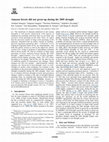
Geophysical Research Letters, 2010
1] The sensitivity of Amazon rainforests to dry-season droughts is still poorly understood, with ... more 1] The sensitivity of Amazon rainforests to dry-season droughts is still poorly understood, with reports of enhanced tree mortality and forest fires on one hand, and excessive forest greening on the other. Here, we report that the previous results of large-scale greening of the Amazon, obtained from an earlier version of satellitederived vegetation greenness data -Collection 4 (C4) Enhanced Vegetation Index (EVI), are irreproducible, with both this earlier version as well as the improved, current version (C5), owing to inclusion of atmosphere-corrupted data in those results. We find no evidence of large-scale greening of intact Amazon forests during the 2005 droughtapproximately 11%-12% of these droughtstricken forests display greening, while, 28%-29% show browning or no-change, and for the rest, the data are not of sufficient quality to characterize any changes. These changes are also not uniqueapproximately similar changes are observed in non-drought years as well. Changes in surface solar irradiance are contrary to the speculation in the previously published report of enhanced sunlight availability during the 2005 drought. There was no co-relation between drought severity and greenness changes, which is contrary to the idea of drought-induced greening. Thus, we conclude that Amazon forests did not green-up during the 2005 drought. Citation: Samanta, A.,
Remote Sensing, 2010
In this study we use long-term satellite, climate, and crop observations to document the spatial ... more In this study we use long-term satellite, climate, and crop observations to document the spatial distribution of the recent stagnation in food grain production affecting the water-limited tropics (WLT), a region where 1.5 billion people live and depend on local agriculture that is constrained by chronic water shortages. Overall, our analysis shows that the recent stagnation in food production is corroborated by satellite data. The growth rate in annually integrated vegetation greenness, a measure of crop growth, has declined significantly (p < 0.10) in 23% of the WLT cropland area during the last decade, while statistically significant increases in the growth rates account for less than 2%. In
Geophysical Research Letters, 2011
In this study, we aim to generate global 30-m Leaf Area Index (LAI) from Landsat surface reflecta... more In this study, we aim to generate global 30-m Leaf Area Index (LAI) from Landsat surface reflectance data using the radiative transfer theory of canopy spectral invariants which facilitates parameterization of the canopy spectral bidirectional reflectance factor (BRF). Furthermore, canopy spectral invariants introduce an efficient way for incorporating multiple bands for retrieving LAI. We incorporate a 3-band retrieval scheme including the Red, NIR and SWIR bands, the SWIR band being specifically useful in low LAI regions and thus compensating for background effects. The initial results have satisfactory agreement with MODIS LAI, although with spatially more detailed structure and variability. A future exercise will be to introduce field measured LAI estimates to minimize the differences between model-simulated LAI's and in-situ observations.
Geophysical Research Letters, 2007
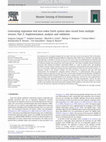
Remote Sensing of Environment, 2008
The evaluation of a new global monthly leaf area index (LAI) data set for the period July 1981 to... more The evaluation of a new global monthly leaf area index (LAI) data set for the period July 1981 to December 2006 derived from AVHRR Normalized Difference Vegetation Index (NDVI) data is described. The physically based algorithm is detailed in the first of the two part series. Here, the implementation, production and evaluation of the data set are described. The data set is evaluated both by direct comparisons to ground data and indirectly through inter-comparisons with similar data sets. This indirect validation showed satisfactory agreement with existing LAI products, importantly MODIS, at a range of spatial scales, and significant correlations with key climate variables in areas where temperature and precipitation limit plant growth. The data set successfully reproduced well-documented spatio-temporal trends and inter-annual variations in vegetation activity in the northern latitudes and semi-arid tropics. Comparison with plot scale field measurements over homogeneous vegetation patches indicated a 7% underestimation when all major vegetation types are taken into account. The error in mean values obtained from distributions of AVHRR LAI and high-resolution field LAI maps for different biomes is within 0.5 LAI for six out of the ten selected sites. These validation exercises though limited by the amount of field data, and thus less than comprehensive, indicated satisfactory agreement between the LAI product and field measurements. Overall, the intercomparison with short-term LAI data sets, evaluation of long term trends with known variations in climate variables, and validation with field measurements together build confidence in the utility of this new 26 year LAI record for long term vegetation monitoring and modeling studies.
AbstractRecent empirical studies have shown that multi-angle data can be useful for predicting c... more AbstractRecent empirical studies have shown that multi-angle data can be useful for predicting canopy height, but the physical reason for this correlation was not understood. The research presented here puts forth a physical explanation for this phenomenon. We employ the ...










Uploads
Papers by Sangram Ganguly